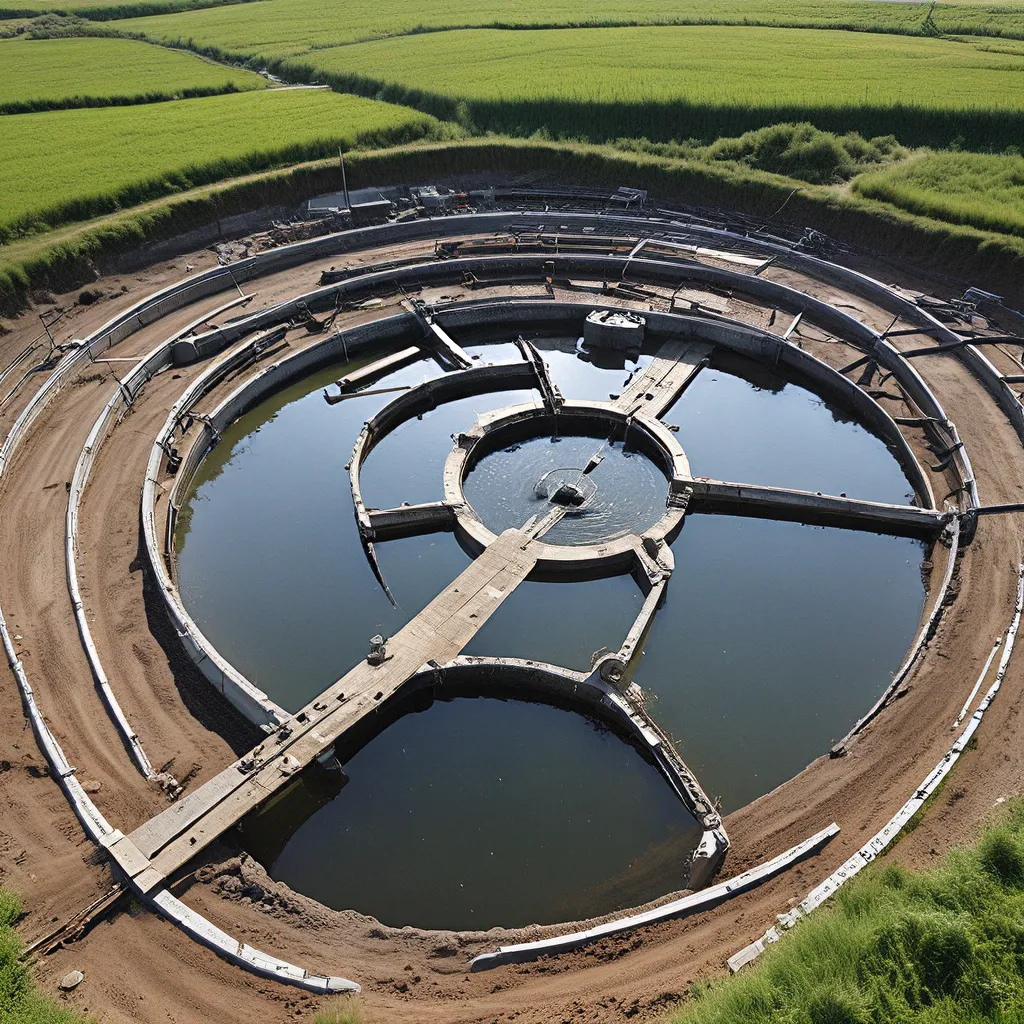
As an environmental enthusiast, I’ve always been fascinated by the incredible potential of wastewater treatment to not only clean our water but also contribute to the circular bioeconomy. It’s a concept that has been gaining traction in recent years, and I can’t help but feel a sense of excitement and optimism about the possibilities.
You see, the traditional linear model of “take, make, waste” has served us well for a long time, but it’s no longer sustainable. We live in a world of finite resources, and we need to find ways to reuse and recycle those resources to the fullest extent possible. That’s where the circular bioeconomy comes in.
Unlocking the Potential of Wastewater
Wastewater treatment plants have long been seen as the unsung heroes of our infrastructure, quietly working behind the scenes to ensure that our water is clean and safe. But what if I told you that these facilities have the potential to do so much more?
Recent studies have suggested that wastewater treatment plants can be transformed into hubs of resource recovery and energy production. By extracting valuable materials like biofuels, nutrients, and biomass from the wastewater stream, we can create a closed-loop system that minimizes waste and maximizes the use of our natural resources.
Biofuel Production from Wastewater
One of the most exciting developments in this area is the production of biofuels from wastewater. Researchers have discovered that certain types of algae and bacteria can thrive in wastewater environments, and they can be harvested to produce biodiesel, biogas, and other renewable fuels.
This not only helps to reduce our dependence on fossil fuels but also contributes to the circular bioeconomy by turning a waste product into a valuable resource. Imagine a world where our wastewater treatment plants are churning out clean energy to power our communities!
Nutrient Recovery and Reuse
But the benefits of wastewater treatment don’t stop there. Another key aspect of the circular bioeconomy is the recovery and reuse of nutrients like nitrogen and phosphorus from the wastewater stream.
These nutrients are essential for plant growth and agricultural production, but they are often lost in the traditional wastewater treatment process. By implementing advanced technologies like struvite precipitation and ion exchange, we can extract these nutrients and repurpose them as fertilizers or soil amendments.
This not only reduces the need for synthetic fertilizers, which can have negative environmental impacts, but also closes the loop on the nutrient cycle, ensuring that these vital resources are reused rather than discarded.
Embracing the Circular Bioeconomy
As you can see, the potential of wastewater treatment to contribute to the circular bioeconomy is truly remarkable. But the transformation from a linear to a circular system is not without its challenges.
One of the biggest hurdles is the need for investment in new technologies and infrastructure. Many wastewater treatment plants were built decades ago, and retrofitting them to enable resource recovery can be costly and time-consuming.
However, the long-term benefits of embracing the circular bioeconomy far outweigh the initial investment. Not only can these facilities generate revenue from the sale of recovered resources, but they also have the potential to reduce the environmental impact of wastewater discharge and contribute to a more sustainable future.
A Holistic Approach to Wastewater Management
To truly maximize the benefits of the circular bioeconomy, it’s essential to take a holistic approach to wastewater management. This means integrating resource recovery strategies into the entire wastewater treatment process, from collection to treatment to discharge.
One promising area of research is the use of algae-based systems to treat and recover resources from wastewater. Algae are highly efficient at removing nutrients, heavy metals, and other contaminants from water, and they can be harvested to produce biofuels, fertilizers, and other valuable products.
Collaboration and Innovation
Of course, transforming our wastewater treatment systems to embrace the circular bioeconomy will require a collaborative effort between policymakers, researchers, engineers, and industry stakeholders.
Fortunately, there are already numerous examples of successful pilot projects and innovative solutions emerging around the world. From Germany to Singapore to right here in the United States, communities are exploring new ways to extract and reuse the valuable resources hidden in their wastewater.
The Future of Wastewater Treatment
As I reflect on the incredible potential of wastewater treatment to contribute to the circular bioeconomy, I can’t help but feel excited and optimistic about the future.
Imagine a world where every wastewater treatment plant is a hub of sustainable resource recovery and renewable energy production. A world where nutrients are continuously recycled, waste is minimized, and our natural resources are protected and preserved for generations to come.
This is not just a dream; it’s a reality that we can work towards together. By embracing the principles of the circular bioeconomy and investing in innovative wastewater treatment technologies, we can transform our water infrastructure into a powerful engine of sustainability and environmental stewardship.
So, let’s get to work! I encourage you to explore the resources available on the Alpha Wastewater website and learn more about the exciting possibilities of wastewater treatment and the circular bioeconomy. Together, we can create a brighter, more sustainable future for all.